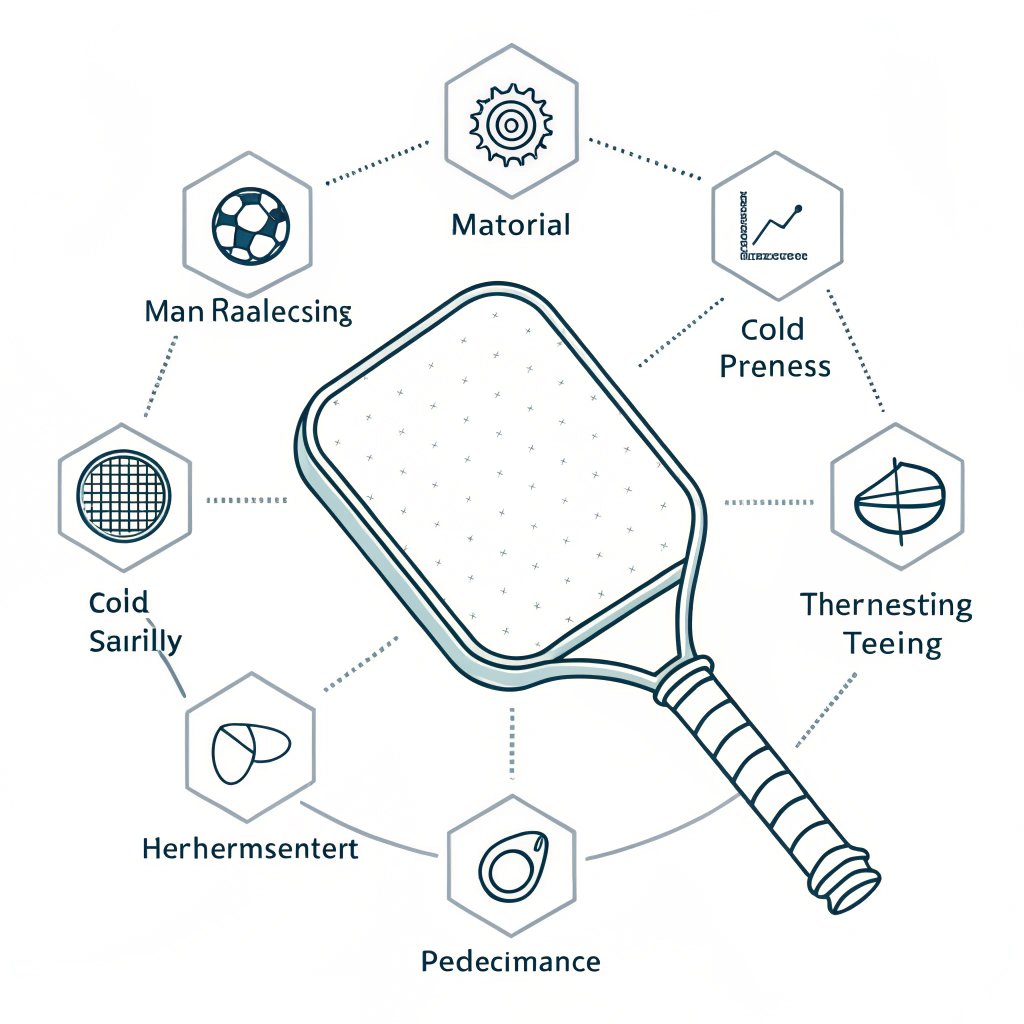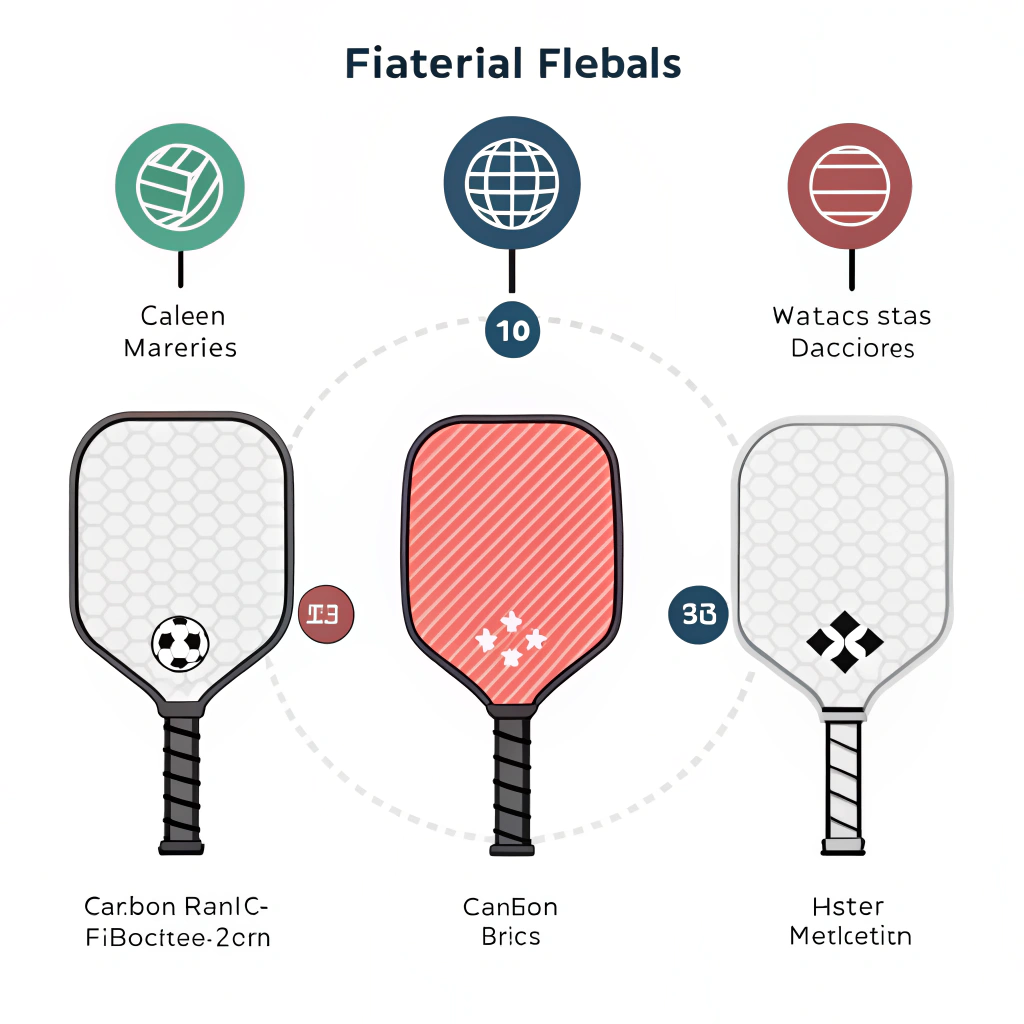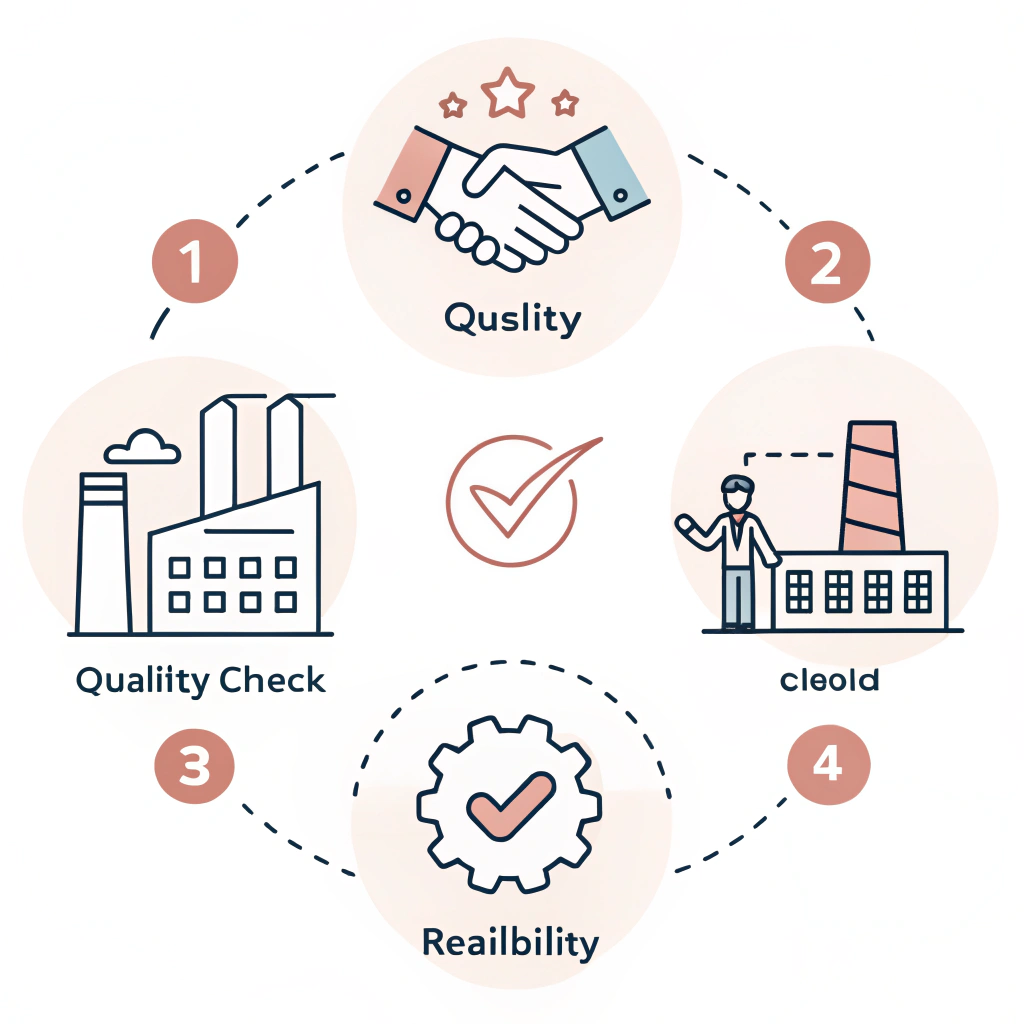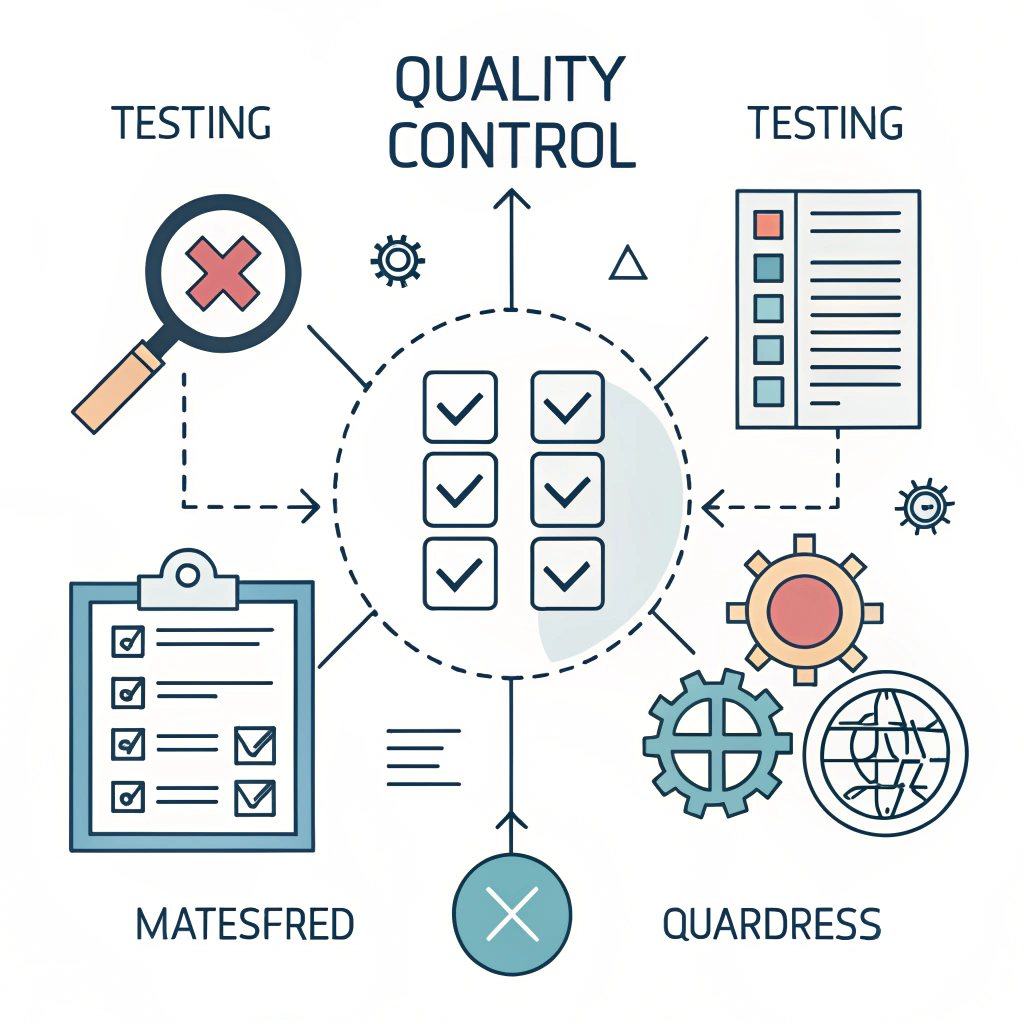Quick Answer: Evaluate pickleball paddle samples by focusing on detailed aspects such as material quality, manufacturing processes, and performance tests. At NEX Pickleball, we ensure every paddle meets high standards through rigorous sampling and testing, using advanced technologies like hot pressing1, cold pressing2, and thermoforming3 to balance cost, durability, and performance.
In today’s competitive landscape, procurement managers at sports equipment distributors are tasked with the challenge of selecting the best supplier for high-performance pickleball paddles. Choosing the right supplier means assessing technical aspects, understanding production processes, and ensuring that performance, durability, and cost align with your organization’s standards. This article presents a solution-oriented guide to help you evaluate paddle samples effectively when considering bulk orders.
When evaluating paddle samples, you face several challenges:
• Identifying the right material composition among options like carbon fiber, fiberglass, and composite materials.
• Understanding the implications of each production process—hot pressing1, cold pressing2, or thermoforming3—on the paddle’s overall quality.
• Ensuring that the paddle’s performance characteristics, such as its weight, grip, core material, and design, meet the precise requirements of your end customers.
These technical details are critical since even slight deviations in quality or performance can affect market reputation and customer satisfaction.
Three main factors contribute to the challenges in evaluating pickleball paddle samples:
-
Material Variance:
The choice between 3K Carbon Fiber, 12K Carbon Fiber4, or other composites can significantly influence performance. Carbon fiber options differ in terms of flexibility and strength, while fiberglass offers a wider sweet spot and better ball control. Understanding these differences is vital for your decision-making. -
Manufacturing Process Impact:
Each production process imparts unique characteristics to the paddle:- Hot Pressing: Delivers excellent impact resistance but can alter material properties, affecting the playing feel.
- Cold Pressing: Offers precise control over the paddle’s structure, preserving material properties for enhanced ball feel.
-
Thermoforming: Enables the creation of intricate designs with improved material distribution, though it increases production time and costs.
Evaluating how these processes affect the end product is essential for quality control.
-
Performance Testing Variability:
Inconsistent production environments or testing conditions might lead to sample-to-sample variations. This variability can translate into differences in paddle balance, grip comfort, and overall playing performance. Reliable performance testing and product sampling standards are needed to minimize discrepancies and ensure consistency.
To address these challenges, procurement and quality control managers should adopt a clear and systematic approach to sampling and evaluating paddle samples. Below is a step-by-step solution framework along with a comparison table to provide clarity.
Before requesting samples, list the key performance indicators you require in the final product. These can include:
- Paddle Weight: Must be optimized to balance power and control.
- Core Material: Options like Nomex Honeycomb Core5, Aluminum Honeycomb Core, or Polymer Honeycomb Core provide varying degrees of shock absorption and ball feel.
- Face Material: Compare materials such as 3K Carbon Fiber (flexibility and durability), 12K Carbon Fiber4 (impact resistance), and Fiberglass (control and wider sweet spot).
- Grip Size and Ergonomics: The paddle should be comfortable for a variety of hand sizes.
- Manufacturing Consistency: Ensure the chosen production process meets your numerical quality and performance metrics.
Request technical documentation and production data from your potential suppliers. Look at these key areas:
- Material Specifications: Verify that the raw materials used align with the described performance benefits.
- Production Process Details: Understand which process is used and ask about control measures implemented during production.
- Quality Assurance Procedures: Ensure there are rigorous performance testing and inspection protocols in place to catch any discrepancies early.
Perform standardized performance tests on sampled paddles. Testing parameters should include:
- Balance and Weight Distribution: Ensuring consistency to meet playability standards.
- Grip Testing: Verifying comfort and fit according to ergonomic standards, especially for bulk orders.
- Durability Tests: Assessing the paddle’s longevity by simulating extended use and high-intensity play.
- Vibration and Shock Absorption: Evaluating the core materials and manufacturing process impact on paddle feel.
A comprehensive testing environment not only measures the paddle performance but also provides assurance about the supplier’s manufacturing capabilities.
A clear table can help summarize the differences in material performance and production methods, assisting you in making an informed decision.
| Evaluation Metric | Hot Pressing | Cold Pressing | Thermoforming |
|---|---|---|---|
| Impact Resistance | High, with altered material feel | Moderate to High | High |
| Production Efficiency | Very High | Lower than hot pressing | Lower; suitable for premium paddles |
| Material Integrity | Possible alteration of characteristics | Preserved, enhanced control | Maintained with precise design |
| Equipment Investment | High | Moderate | High due to longer production time |
| Best For | High-performance, durable paddles | Precision control and ball feel | Custom and intricate designs |
This table provides a quick reference to gauge which manufacturing process best suits the type of paddle quality you desire.
Supplier evaluation is not solely based on paddle performance. Consider the following:
- Supplier Background: NEX Pickleball, as a leading manufacturer for brands like Joola and Selkirk, has a proven track record and rigorous quality control methods.
- Customization Services: Evaluate if the supplier offers customized paddle options, such as specific grip sizes, weight adjustments, and custom branding. This is particularly important when addressing varied market demands.
- Bulk Order Efficiency: Confirm that the supplier can meet large-scale production requirements while maintaining consistency and competitive pricing.
- After-Sales Support and Warranty: Ensure that robust after-sales services are provided to handle any issues post-delivery, which is crucial for maintaining product reliability in the market.
Before committing to a large order, it is advisable to execute a pilot order. This allows your quality control team to:
- Compare Multiple Samples: Test different paddle variants to see which offers the best balance between cost, quality, and performance.
- Real-world Field Testing: Allow users and players to test the paddles, providing feedback on performance, control, and durability.
- Vendor Evaluation: Confirm whether the supplier can reproduce the pilot quality consistently on a larger scale.
- Material Quality: Always ensure the raw materials meet industry standards and that each batch is consistent.
- Manufacturing Consistency: Evaluate if the production process is repeatable and if the quality control checks are rigorous enough.
- Cost versus Performance: While high-end materials like 12K Carbon Fiber4 may increase paddle performance, aligning these with your budget and market requirements is critical.
- Customization and Flexibility: Gauge the supplier's ability to adapt to specific order requirements, ensuring that each sample can be tailored for your market's needs.
- Develop a comprehensive checklist based on key evaluation metrics covering material, design, and performance.
- Request detailed production and quality assurance documents from suppliers.
- Conduct standardized performance testing using both lab conditions and field tests.
- Use a comparative table to analyze different manufacturing processes.
- Validate consistency by starting with a pilot order and obtaining field feedback.
- Ensure the supplier can provide customization and robust post-sale support.
By following these structured steps, you can confidently assess paddle samples and select a supplier that not only meets your technical standards but also offers flexibility and reliability for a long-term partnership.
What to look for when purchasing pickleball paddles?
When evaluating pickleball paddles, focus on factors such as the paddle shape, the core and face materials, handle length, weight, and grip size to match playing style. Paying close attention to these specifications helps ensure the paddle delivers optimal performance and durability.
What is the marketing strategy of pickleball?
The marketing strategy for pickleball typically involves platforms like Google Ads to reach high-intent audiences and social media channels such as Facebook, Instagram, and YouTube. These platforms help in engaging a broad audience of pickleball enthusiasts and capturing market trends effectively.
Should I buy a more expensive pickleball paddle?
Expensive pickleball paddles often employ advanced materials like carbon fiber and fiberglass, providing benefits in control, power, and overall performance. However, the best choice depends on your specific play style and performance requirements; higher cost does not always equate to better performance for every player.
-
hot pressing: Read the linked article to learn how hot pressing influences material properties and optimizes manufacturing quality. ↩ ↩ ↩2
-
cold pressing: Read the linked article to understand how cold pressing preserves material integrity and ensures precise structural control. ↩ ↩ ↩2
-
thermoforming: Read the linked article to discover the role of thermoforming in achieving intricate designs and improved material distribution. ↩ ↩ ↩2
-
12K Carbon Fiber: Click the linked article to explore the performance advantages of 12K Carbon Fiber and its impact on paddle durability and playability. ↩ ↩ ↩2 ↩3
-
Nomex Honeycomb Core: Click to find out the benefits of using Nomex Honeycomb Core for enhanced shock absorption and lightweight performance. ↩ ↩







